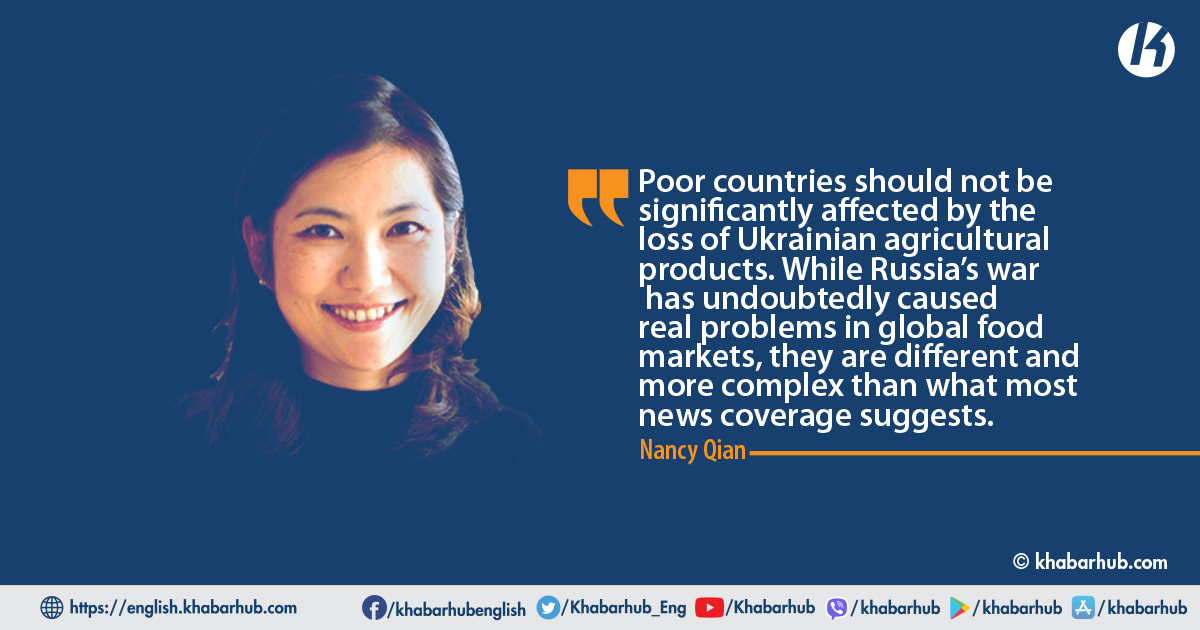Russia’s blockade of Ukrainian food shipments and the potential loss of Ukrainian harvests due to disruptions from the war have dominated headlines in recent months.
Between February and June, global wheat prices surged by more than 60%, fueling humanitarian concerns and warnings from international development agencies about increased food insecurity in poor African and Asian countries.
But many of these headlines have been misleading. In poor countries, around 80% of all calories come from cereals.
The most important is rice, which accounts for 27% of per capita caloric intake in the developing world, and is the main staple in Asia. In countries such as Myanmar and Cambodia, rice makes up 80% of calories.
Maize is the most important subsistence cereal in Africa. Around 30% of the world’s maize is consumed by African countries, with people in Malawi, Lesotho, and Kenya consuming an average of 90-180 kilograms (198-397 pounds) per year.
Wheat, which is the second most important cereal globally, is relatively unimportant in poor countries. For example, annual per capita wheat consumption is only around 17 kilograms in Sub-Saharan Africa.
Exports could decline because of war, bad weather, or an economic crisis that derails production. It could decline for political reasons, such as a Russian gambit to leverage its market power, as it has done with gas.
Now, consider Ukraine’s contribution to the global food supply. In 2020, it exported very little rice, 18 million tons of wheat, and 28 million tons of maize.
It was the fifth-largest wheat exporter after Russia (37.3 million tons), the United States (26 million), Canada (26 million), and France (19.8 million); and the fourth-largest maize exporter, following the US (52 million tons), Argentina (37 million), and Brazil (34 million).
The loss of Ukrainian wheat and maize should not by itself trigger food insecurity in poor countries, because production and exports from other countries can increase.
Consider maize. The poor countries that rely on maize produce most of it domestically, and very little of what they import comes from Ukraine. For example, in 2020, Kenya imported only 11,818 tons from Ukraine. Deficits of that size should be relatively easy for other producers to fill, especially given that most maize is not needed for human subsistence. Globally, only 15% of all maize produced in the world is consumed as food. In the US – the world’s largest maize producer – 10-12 million tons per year is used to produce sweetener.
Other producers should also be able to compensate for the loss of Ukrainian wheat. Past production shows that many countries are not currently at full capacity.
For example, increasing US wheat exports from recent levels of 26 million tons to their 1981 peak of 44 million tons would more than make up for the loss of Ukraine’s total wheat exports.
The risk of fertilizer shortages has also generated headlines because this could reduce the supply and increase the price of food globally. But Ukraine accounts for only 0.8% of world fertilizer exports.
All told, poor countries should not be significantly affected by the loss of Ukrainian agricultural products. But this does not mean that food-insecurity concerns are overblown. The problems are just different and more complex than what the headlines imply.
Food insecurity has been steadily worsening for years. In low-income countries, the share of people suffering from a lack of sufficient high-quality nutrition rose from around 13% in 2015 to 26% in 2019, owing to the interplay of factors such as climate change, failing institutions, and regional armed conflict.
To associate the problem solely with Russia’s war in Ukraine risks creating a false assumption that it can be fixed or significantly ameliorated by ending the war in Eastern Europe.
The Russian invasion of Ukraine can indeed cause problems in global food markets. It can reduce global food supplies in the short run, especially when there are disruptions to shipping lanes and access to ports.
Fortunately, recent negotiations show that these problems can be remedied. Moreover, the 850 million tons of global grain reserves, 25% of which are held by the US and the European Union, can also be used to help address temporary deficits.
The food crisis triggered by the Russia-Ukraine war highlights acute food-insecurity challenges. A closer look shows that the problems run far deeper than the current war and that the global food system urgently needs to become more resilient for political and humanitarian reasons.
The bigger long-run danger is that Russia – not Ukraine – will reduce exports. Russia accounts for 19% of global wheat exports and 15% of fertilizer exports.
Exports could decline because of war, bad weather, or an economic crisis that derails production. It could decline for political reasons, such as a Russian gambit to leverage its market power, as it has done with gas.
Conversely, Ukraine and its allies may seek to increase the economic pressure on Russia by demanding a ban on its agricultural exports, which have thus far been exempt from trade sanctions. Political hostilities are likely to continue even after the end of the armed conflict.
Given these risks, a sensible response for the US and its agriculturally productive allies is to increase crop production and augment reserves.
Increasing production allows grain reserves to expand without reducing global supplies; and with larger reserves, small amounts can be more readily released to help smooth over temporary deficits.
These policies also send a strong signal to farmers to keep up production capacity, which will help ensure the ability to pursue even greater production should the need arise.
Increasing production and reserves will moderate the disruptions of war in the short term and, in time, reduce global dependence on Russian agricultural exports, giving Ukraine’s allies more room for political maneuver.
For poor countries facing the growing threat of chronic food insecurity, these policies provide insurance against mass starvation.
The food crisis triggered by the Russia-Ukraine war highlights acute food-insecurity challenges. A closer look shows that the problems run far deeper than the current war and that the global food system urgently needs to become more resilient for political and humanitarian reasons.
(Nancy Qian is a Professor of Managerial Economics and Decision Sciences at Northwestern University’s Kellogg School of Management)
Copyright: Project Syndicate









Comment